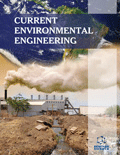Abstract
Meat industry generates various wastes such as effluent, emissions and solid wastes that pose environmental and health problems. The effluent released from the meat industries finds its way into the natural water resources and degrade the water quality. The solid wastes of meat industry create a public nuisance by way of foul smell if it is not handled properly. The effluents, as well as solid wastes of meat industries, are possible sources of pathogens that are hazardous to human health. Waste minimization, segregation of wastes and treatment, processing of wastes to make possible recoveries of by-products and the final disposal are the basic steps for containment of pollution from the meat industry. The effluent treatment technologies include primary treatment, secondary treatment and tertiary treatment. Composting, biomehtanation, rendering, incineration and burial are the processes for disposing of the solid wastes generated by meat industries. Appropriate treatment process is selected considering the level of pollution, mode of disposal and the environmental standards. The treatment and processing of meat industry wastes minimize the pollution problems and also give scope for the recovery of by-products such as bone and meat meal, tallow, methane and manure that have commercial values. The meat industries also generate odours that are required to be contained using suitable control devices. The paper seeks to give an overview of the pollution control technologies currently in use for the treatment of effluents and solid wastes, and possible recovery of by-products.
Keywords: Meat industry, slaughter house, abattoir, pollution control, waste management, treatment technology.
Graphical Abstract
 20
20 4
4

